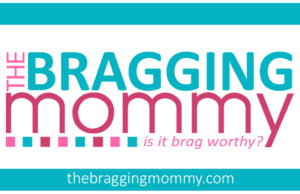Hydrogen-enriched water has gained attention as a beverage that might offer unique health advantages. Yet, the effectiveness of hydrogen water largely depends on the concentration of dissolved hydrogen gas in the bottle. This article explores the scientific principles behind hydrogen concentration in water bottles, the factors that influence it, and what consumers should keep in mind when choosing these products.

Understanding Molecular Hydrogen in Water
Molecular hydrogen (H₂) consists of two hydrogen atoms bonded together, forming a colorless, odorless gas. In the context of drinking water, hydrogen refers to this molecular form dissolved in the liquid. Unlike hydrogen ions (which affect pH), dissolved molecular hydrogen behaves differently and is considered for its antioxidant properties.
Hydrogen’s solubility in water is limited. At room temperature and atmospheric pressure, about 1.6 milligrams of hydrogen can dissolve in one liter of water (roughly 1.6 ppm). This maximum concentration forms the benchmark for hydrogen-rich water.
How Hydrogen is Added to Water
Various methods exist to infuse hydrogen gas into water:
- Electrolysis: An electrical current passes through water, splitting it into hydrogen and oxygen gases. The hydrogen dissolves in the water during this process, producing hydrogen-rich water immediately.
- Magnesium Reaction: Magnesium metal reacts with water or acidic compounds to release hydrogen gas, which dissolves into the liquid. Some hydrogen water tablets operate on this principle.
- Direct Gas Infusion: Hydrogen gas is directly injected or bubbled into water under controlled conditions to increase hydrogen concentration.
Each method influences how much hydrogen is dissolved and how stable it remains over time.
Measuring Hydrogen Concentration
Accurately measuring hydrogen concentration is crucial for validating product claims. Common units include parts per million (ppm) or milligrams per liter (mg/L), which are numerically equivalent for dissolved gases.
Measurement techniques include:
- Gas Chromatography: Separates and quantifies gases in a water sample but requires specialized equipment.
- Electrochemical Sensors: Portable devices that detect hydrogen based on changes in electrical current or potential.
- Chemical Titration Methods: Utilize reactions that indicate hydrogen presence through color changes or other measurable effects.
Challenges arise because hydrogen is volatile; it escapes quickly from water, making timing and handling critical for accurate readings.
Factors Affecting Hydrogen Stability in Bottles
Even after infusing water with hydrogen, maintaining that concentration until consumption presents challenges:
- Bottle Material: Plastic bottles tend to be permeable to gases, allowing hydrogen to escape. Glass and aluminum bottles provide better barriers against hydrogen loss.
- Temperature: Higher temperatures decrease hydrogen solubility, causing the gas to escape faster.
- Pressure: Pressurized bottles can hold higher hydrogen concentrations by reducing gas escape, but once opened, pressure drops and hydrogen dissipates.
- Light Exposure: Ultraviolet light may accelerate hydrogen degradation, though this effect is less studied.
- Seal Quality: A tight seal prevents hydrogen gas from leaking, preserving concentration for longer periods.
Together, these factors determine how long hydrogen stays dissolved in the water.
Hydrogen Concentration and Health Considerations
Interest in hydrogen water stems from research suggesting that molecular hydrogen’s antioxidant potential might help reduce oxidative stress. However, many studies focus on specific hydrogen concentrations, usually near the saturation point (~1.6 ppm).
Lower hydrogen levels offer limited benefits, while concentrations well above saturation are generally impossible without pressurization. Additionally, the duration that hydrogen remains in solution affects potential health effects.
Current scientific evidence is mixed and still developing. While some small-scale human and animal studies report benefits, large-scale clinical trials are limited.
Tips for Consumers
If hydrogen water interests you, consider the following:
- Bottle Choice: Opt for glass or aluminum containers with good sealing mechanisms.
- Storage: Keep bottles cool and away from direct sunlight to slow hydrogen loss.
- Use Timing: Consume hydrogen water soon after opening or production to maximize hydrogen intake.
- Check Labels: Look for clear hydrogen concentration information, ideally measured close to the time of bottling.
- Avoid Plastic: Plastic bottles, especially thin or flexible ones, allow hydrogen to escape rapidly.
Emerging Technologies and Future Directions
Innovation continues in this area. New packaging materials with improved gas barriers, portable electrolysis devices, and advanced measurement tools aim to improve hydrogen concentration retention and consumer experience.
Research will likely clarify hydrogen’s effects and optimal dosing, shaping future product development.
Conclusion
The concentration of molecular hydrogen in water bottles is a key factor influencing the potential effects of hydrogen-rich water. Understanding how hydrogen dissolves, how it is measured, and what affects its stability can help consumers make informed choices. While hydrogen water holds promise, maintaining adequate hydrogen levels until consumption remains a scientific and engineering challenge. Careful consideration of packaging, storage, and timing can make a difference in preserving hydrogen concentration.
Dr. Water can help all this and more. Get started now!



